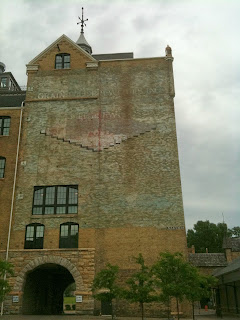 I was going to try to make some sort of lame joke about not understanding what "For Rentals" means, but couldn't pull it off (yeah, I'm a dweeb). But if you look closer, underneath is a sign for Norton & Peel Commercial Photography, which is perhaps a little of what the kids these days call "meta" as these gentlemen are responsible for many of the Historical Society photos I've linked too. Apparently after disentangling himself from Ralph Kramdon's various escapades old Norton hooked up with Norman Vincent Peel to start taking photos (phew, knew I could work in a lame "joke" somewhere).
I was going to try to make some sort of lame joke about not understanding what "For Rentals" means, but couldn't pull it off (yeah, I'm a dweeb). But if you look closer, underneath is a sign for Norton & Peel Commercial Photography, which is perhaps a little of what the kids these days call "meta" as these gentlemen are responsible for many of the Historical Society photos I've linked too. Apparently after disentangling himself from Ralph Kramdon's various escapades old Norton hooked up with Norman Vincent Peel to start taking photos (phew, knew I could work in a lame "joke" somewhere).The real Messrs. Norton & Peel operated their photography business at this location, from 1925 to 1965, taking more than 300,000 pictures, mostly of the local area, during that time. According to Peel's obituary, he "created the face of General Mill's original Betty Crocker."
The studio was on the second floor at 1004 Marquette Avenue, and the sign is right next to the one for Dahl's Violin Shop.







































 This one is apparently only a ghost via its age.
This one is apparently only a ghost via its age. 


